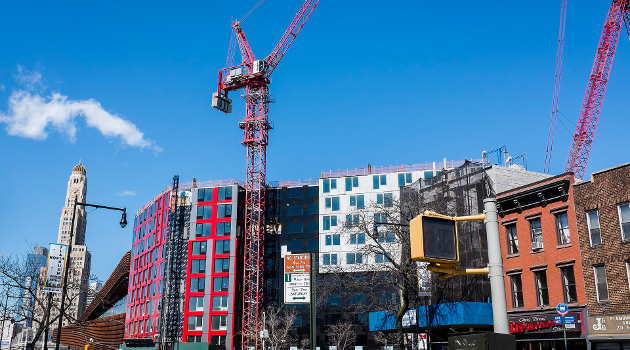I commonly use “everything you need to know” when sharing a story that summarizes the buffoonery of a government (either international, national, regional, or local).
I even occasionally claim that a story (see here, here, and here) tells you “everything you need to know” about government, period.
Today’s column will follow that second approach.
Why? Because I just read a story in the Washington Post that perfectly captures the inherent waste and inefficiency of the public sector.
Here are some excerpts.
In the heart of D.C., along a narrow street in the affluent Adams Morgan neighborhood, a scaffolding rises above the sidewalk… The 52-unit building under construction will house people making far below the area’s median income. Half will be newly released from incarceration. But the building’s development cost is enough to make the neighborhood’s wealthier residents blink: $1.2 million per apartment. That tab will be picked up in large part by taxpayers… The D.C. building, called Ontario Place, will include a rooftop aquaponics farm to produce fresh fruits and vegetables for its tenants, whose rents will be capped at well below market rates. Two nearby buildings by the same developer, D.C. nonprofit Jubilee Housing, have run up a development price tag of $1.3 million for each of 50 apartments, city records show. …the average D.C. home value is $616,567, according to Zillow.
By the way, it’s just just D.C. that is a cesspool of waste.
This is quite common in big cities controlled by the left. The article cites absurd projects in Chicago and San Francisco.
It’s an example of a trend in expensive cities across the nation, including San Francisco and Chicago, where costs to house the poor are approaching and at times exceeding $1 million per unit. …it has also become commonplace for government-subsidized housing to cost much more to build than that of the private market, housing experts say. In Chicago, a 43-unit building in East Garfield Park is projected to cost about $900,000 per apartment, city records show. In San Francisco, several buildings have exceeded the $1-million-per-unit mark.
Why are these cities wasting money in such an absurd way?
Part of the answer is that these are corrupt localities, but the bigger problem is that the federal tax code makes such projects profitable for certain developers. Here are some of the relevant passages.
Among key drivers of such high prices are the financing costs associated with using Low-Income Housing Tax Credits, which over the past few decades has become the low-income housing industry’s primary funding source — …about $10.5 billion per year…according to the U.S. Department of Housing and Urban Development. …To make use of the credits, which lower a company’s tax liability dollar-for-dollar, developers typically partner with big companies, such as banks, that have tax liabilities big enough to benefit from them. …affordable housing developers and advocates privately acknowledge the program’s inefficiencies.
Yet another reason to rip up the tax code and replace it with a simple and fair flat tax.
But don’t hold your breath waiting for that to happen. Various interest groups want to keep this scam going because they reap the benefits.
And they donate to politicians who don’t care about the national interest and thus vote to perpetuate the scam.
The net result is massive waste and inefficiency.
In an ideal world, the answer is not only to have a flat tax, but also to get government out of the housing sector.
That includes shutting down the Department of Housing and Urban Development.
Too bad there’s not a party in Washington that cares about the country.
———
Image credit: Billie Grace Ward | CC BY 2.0.




